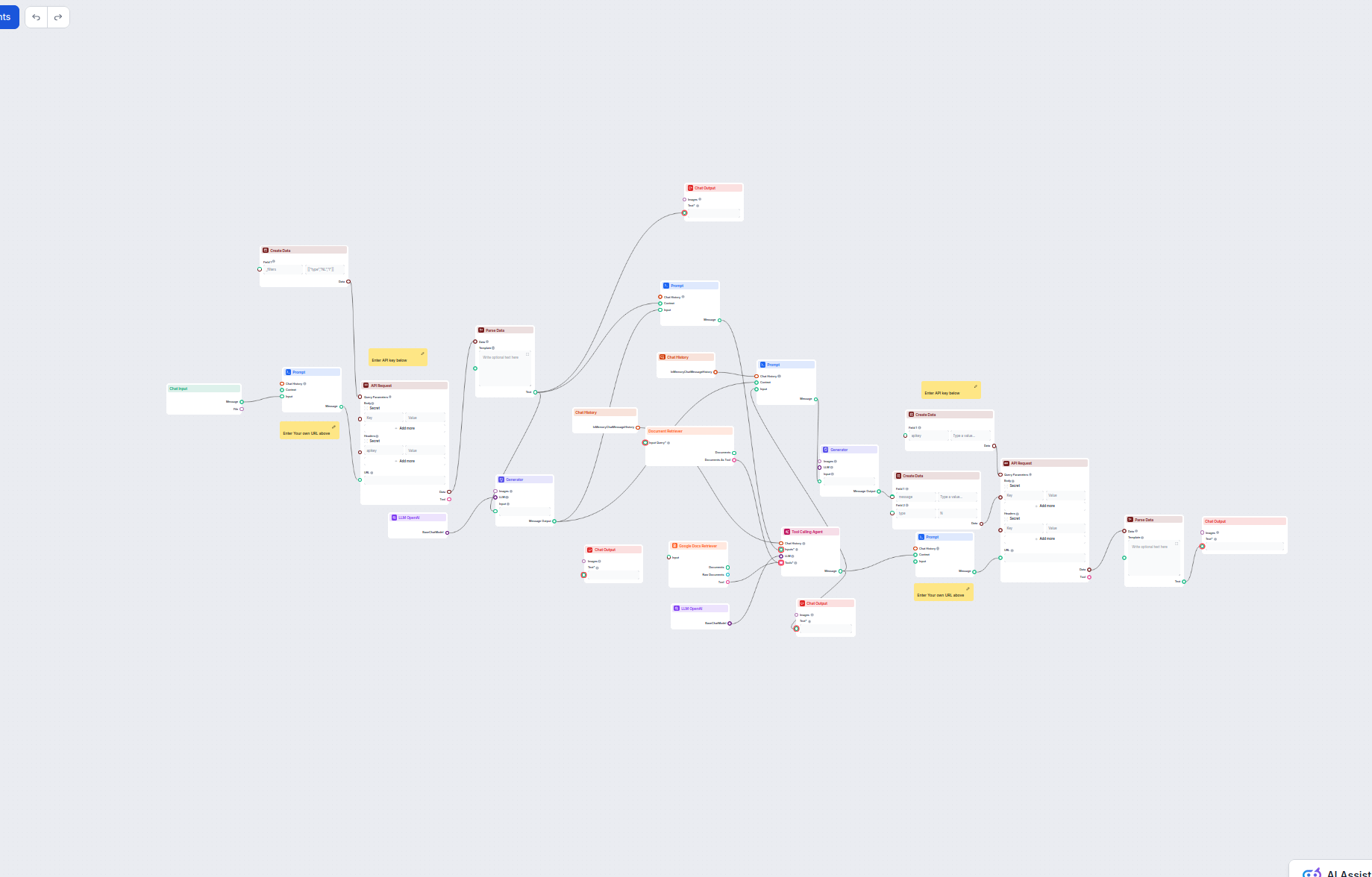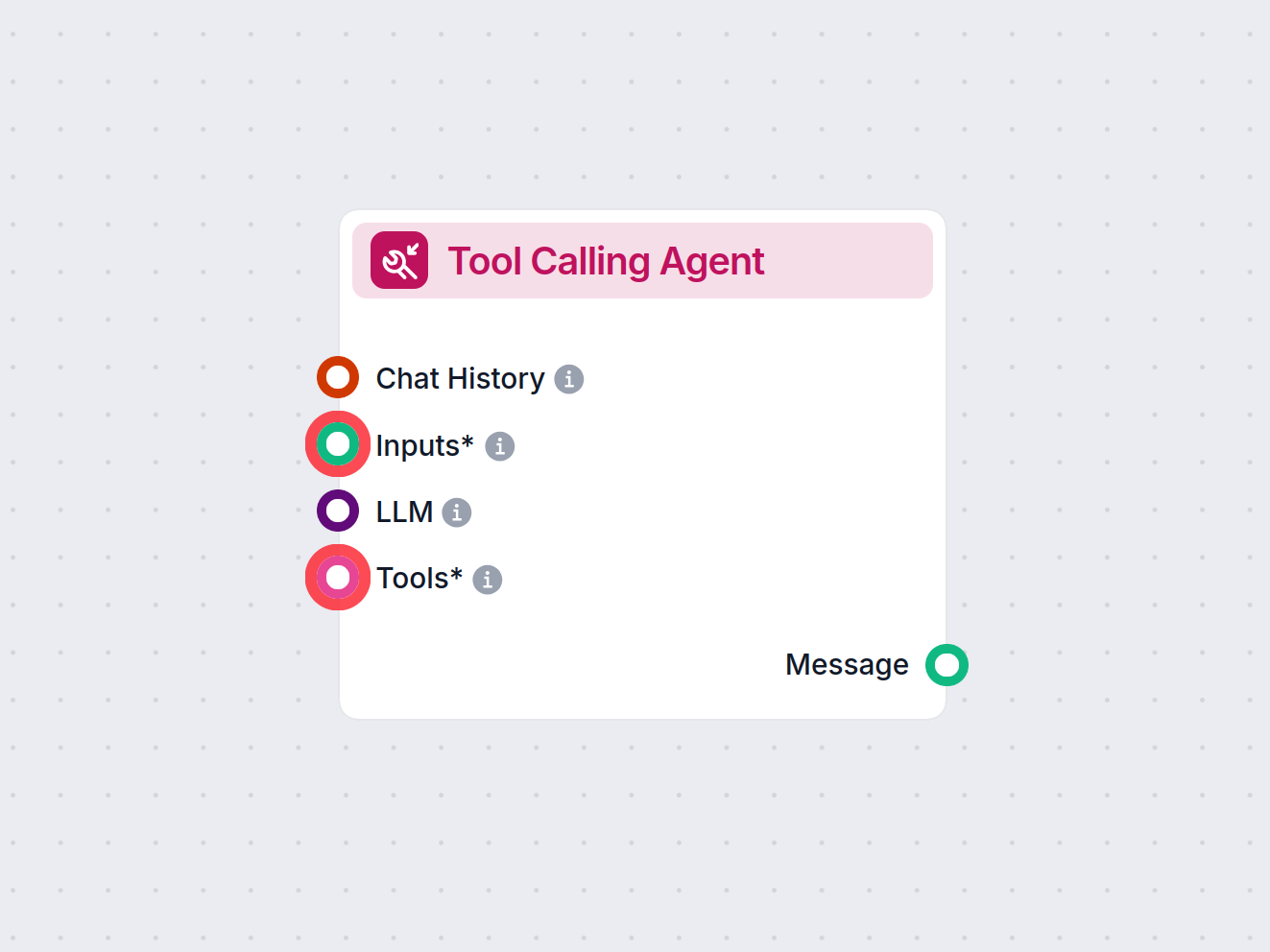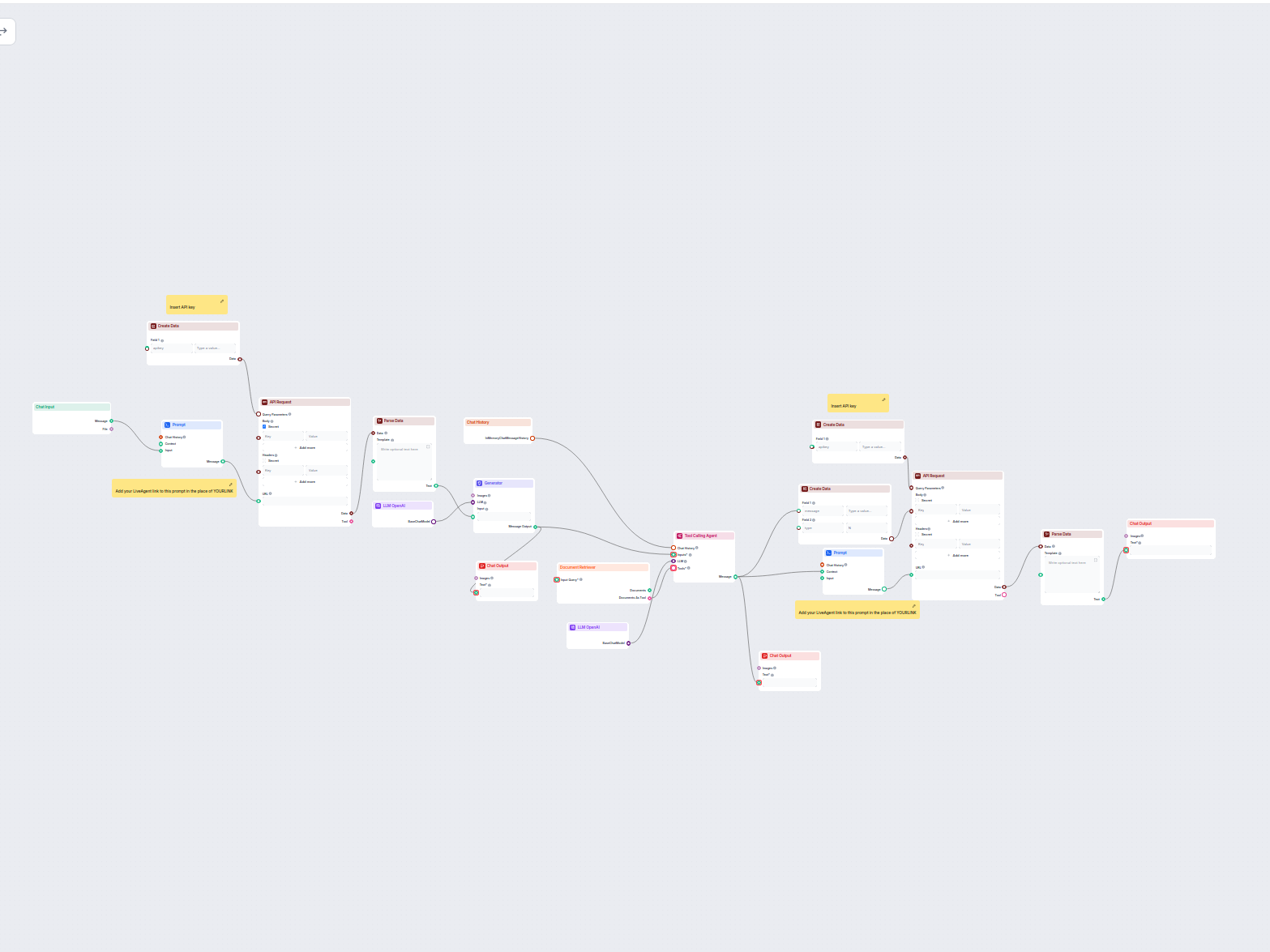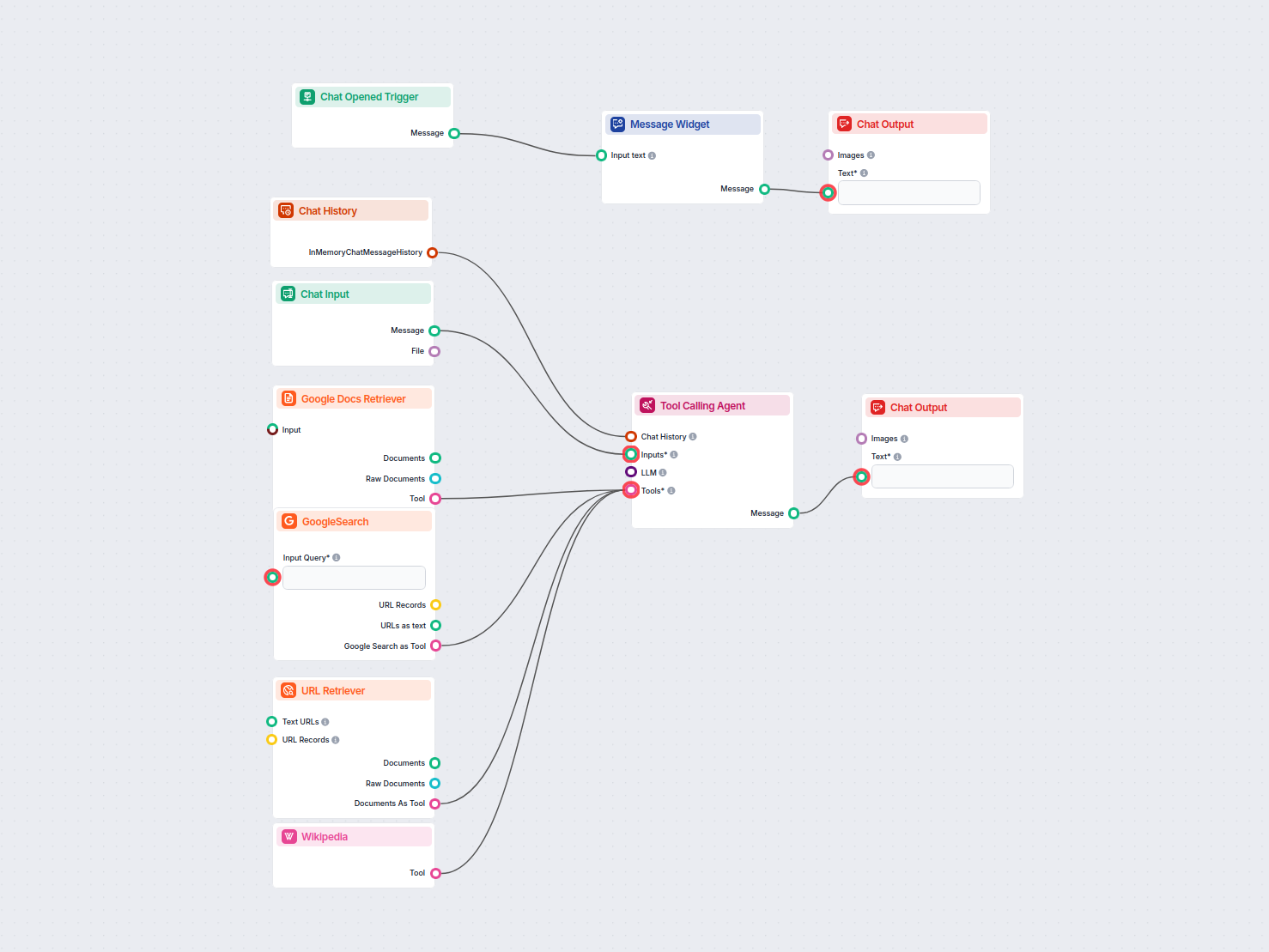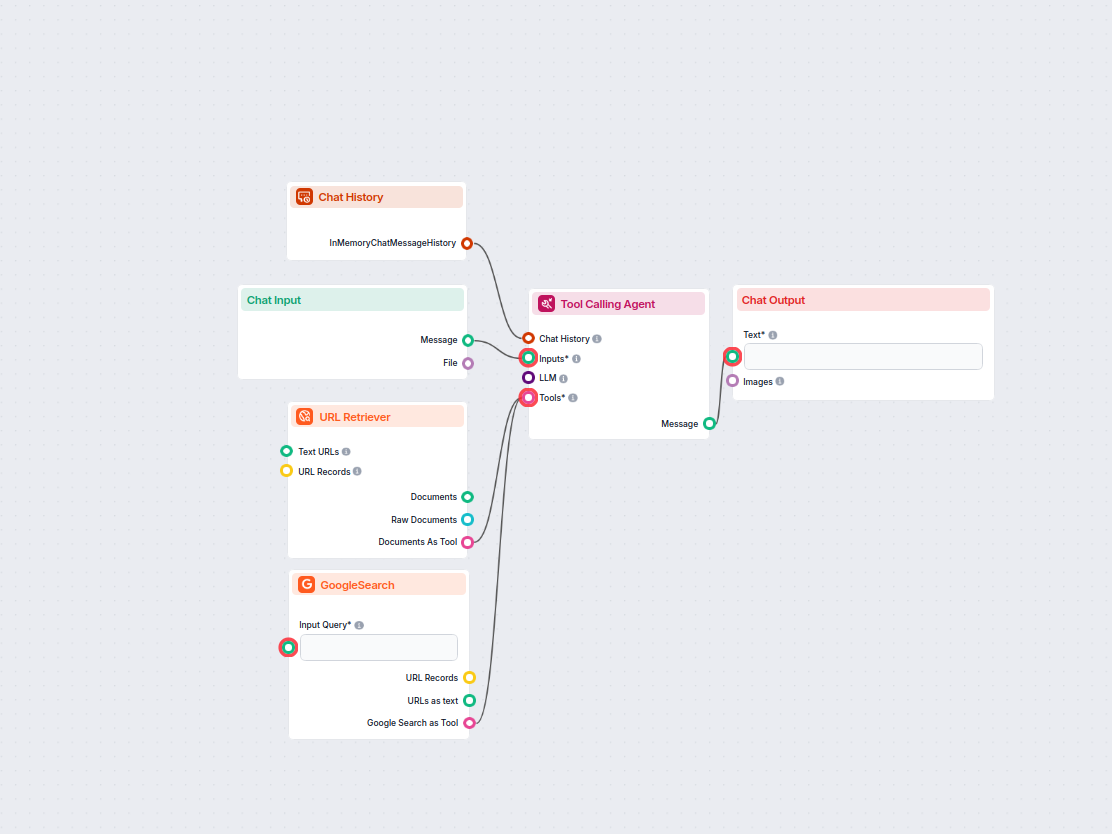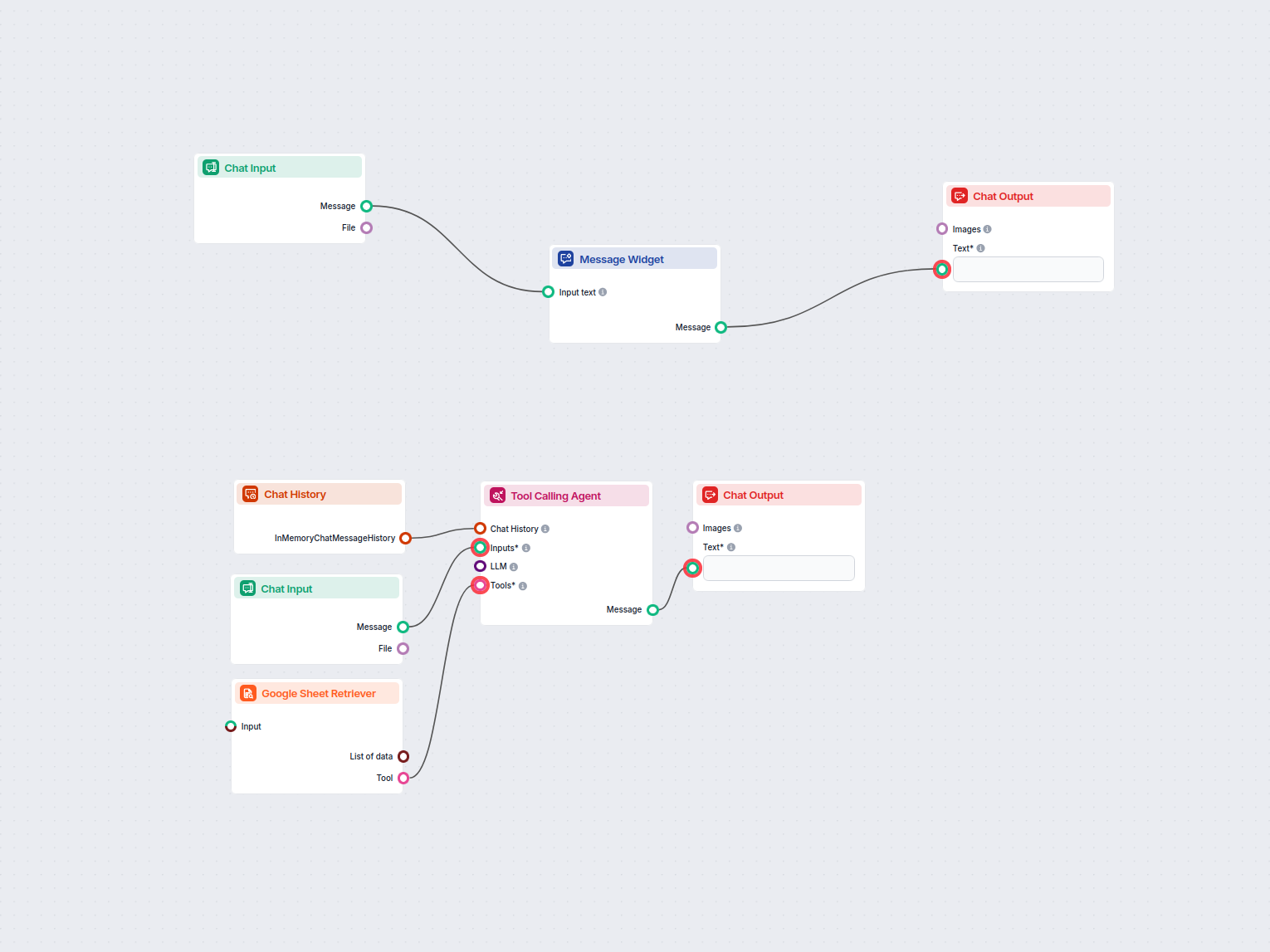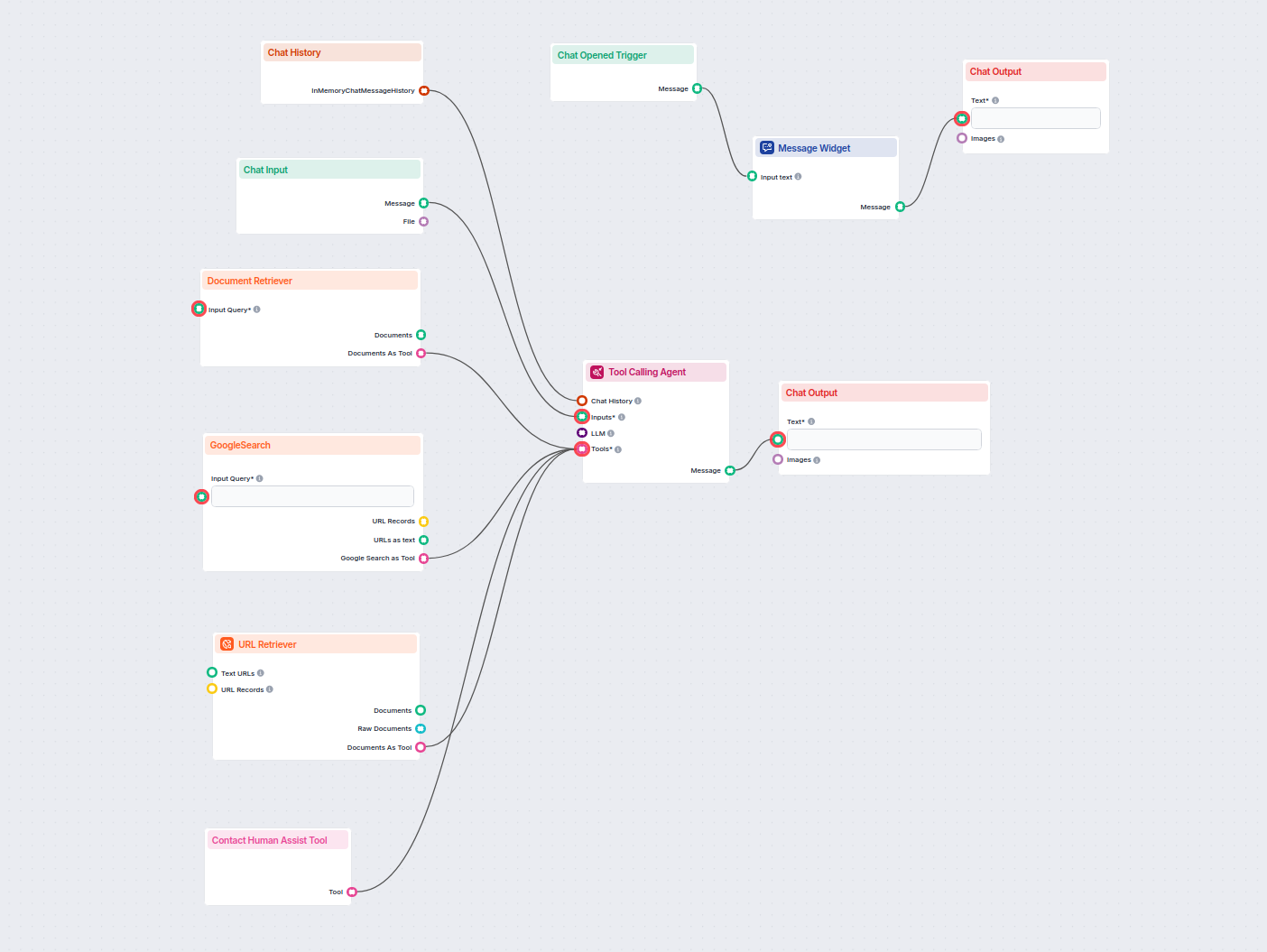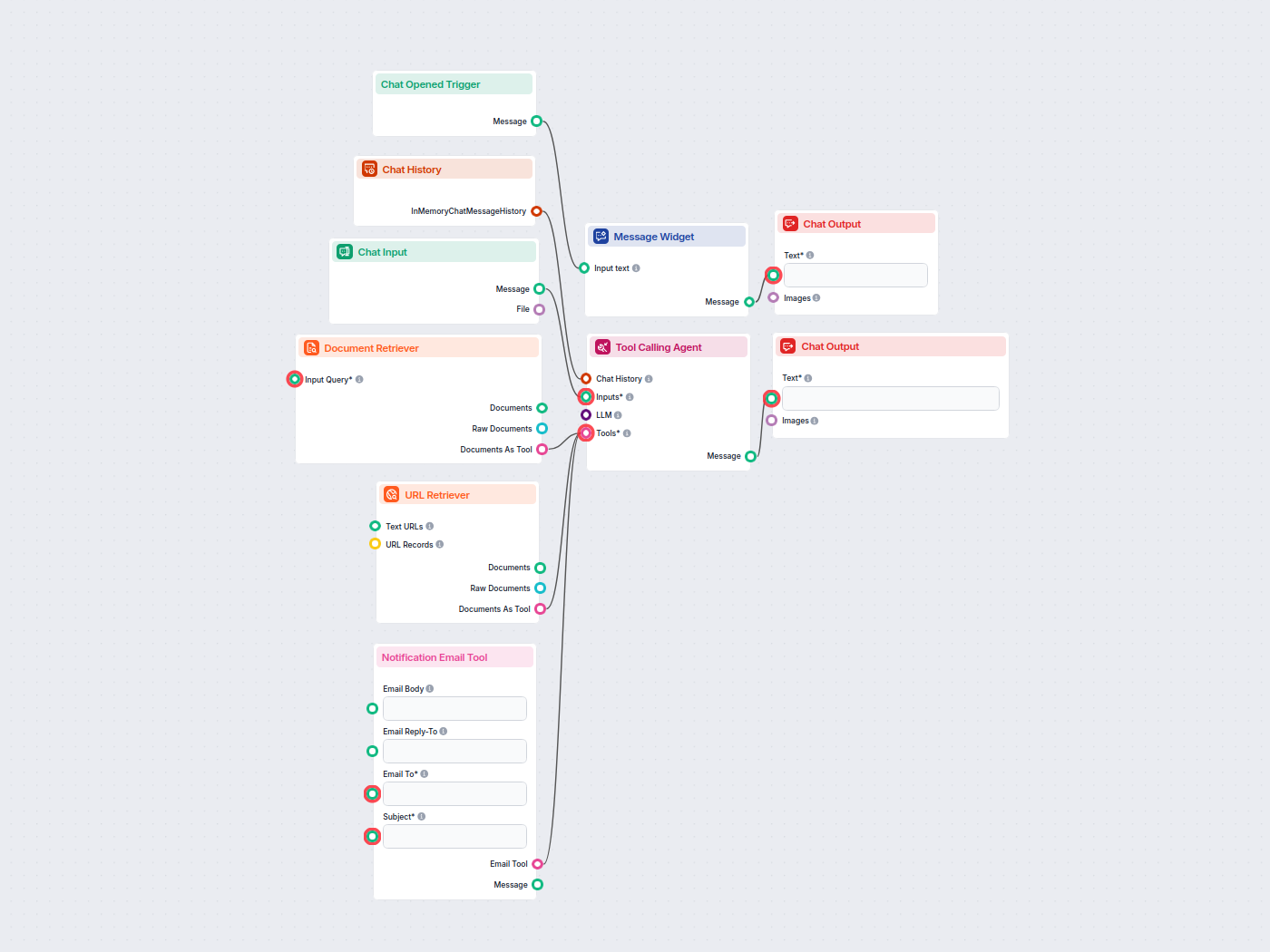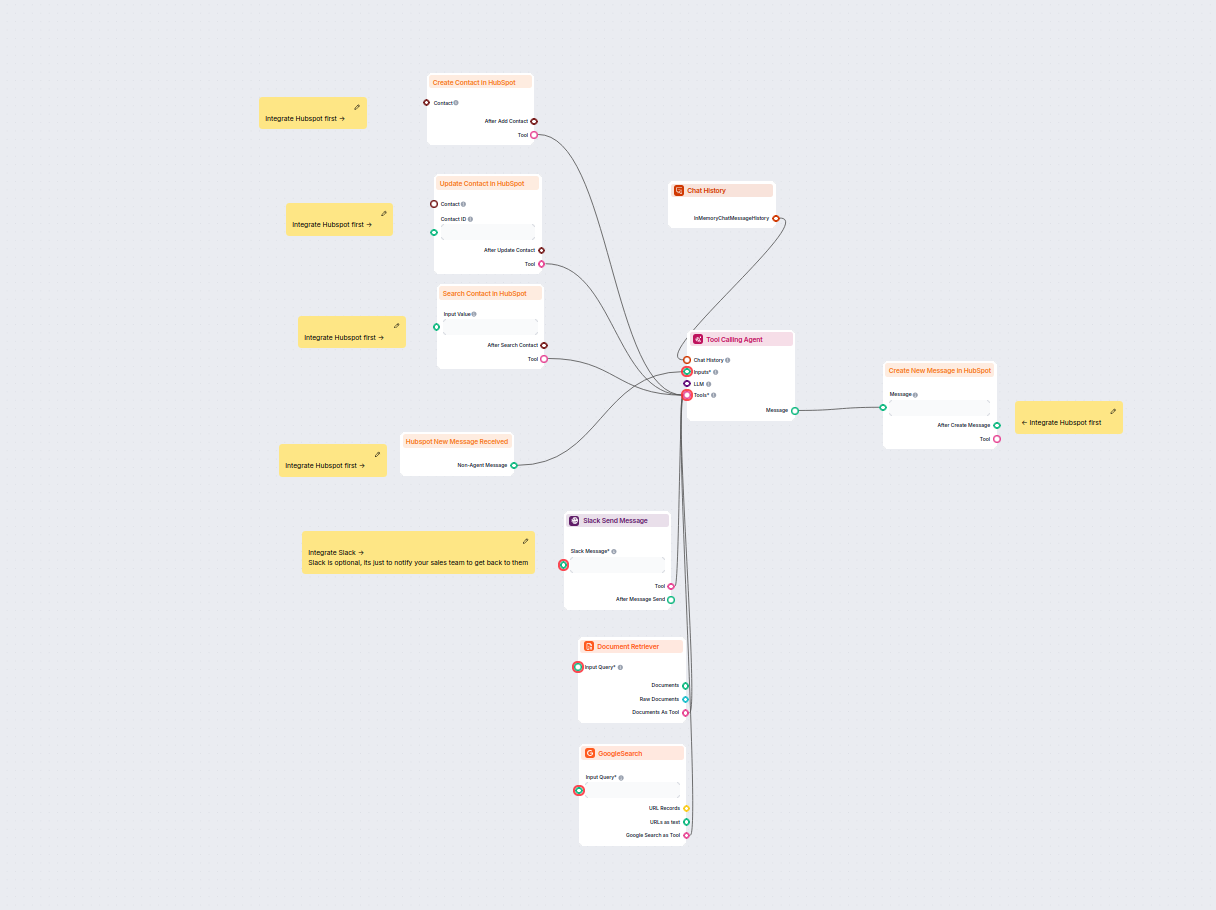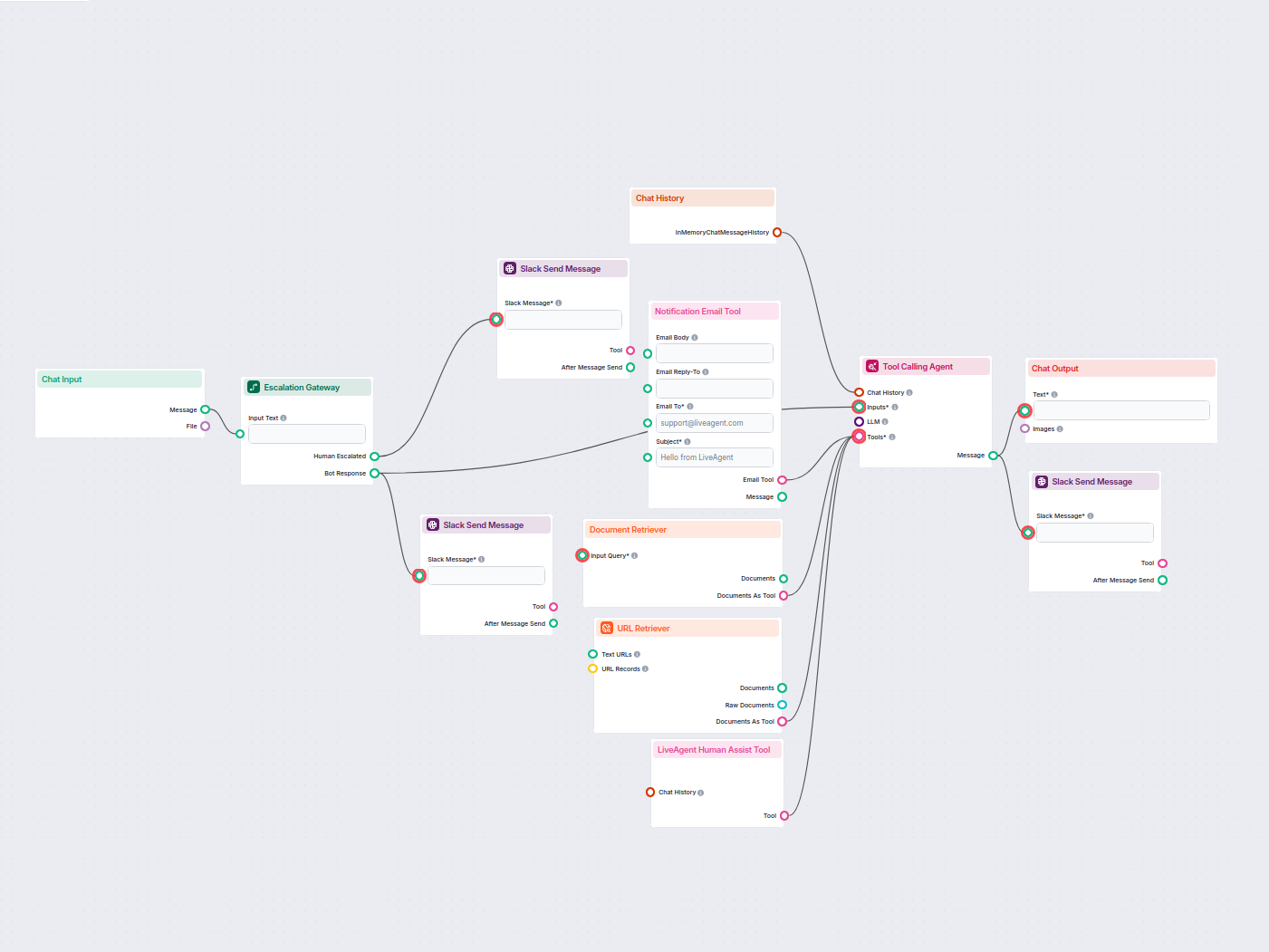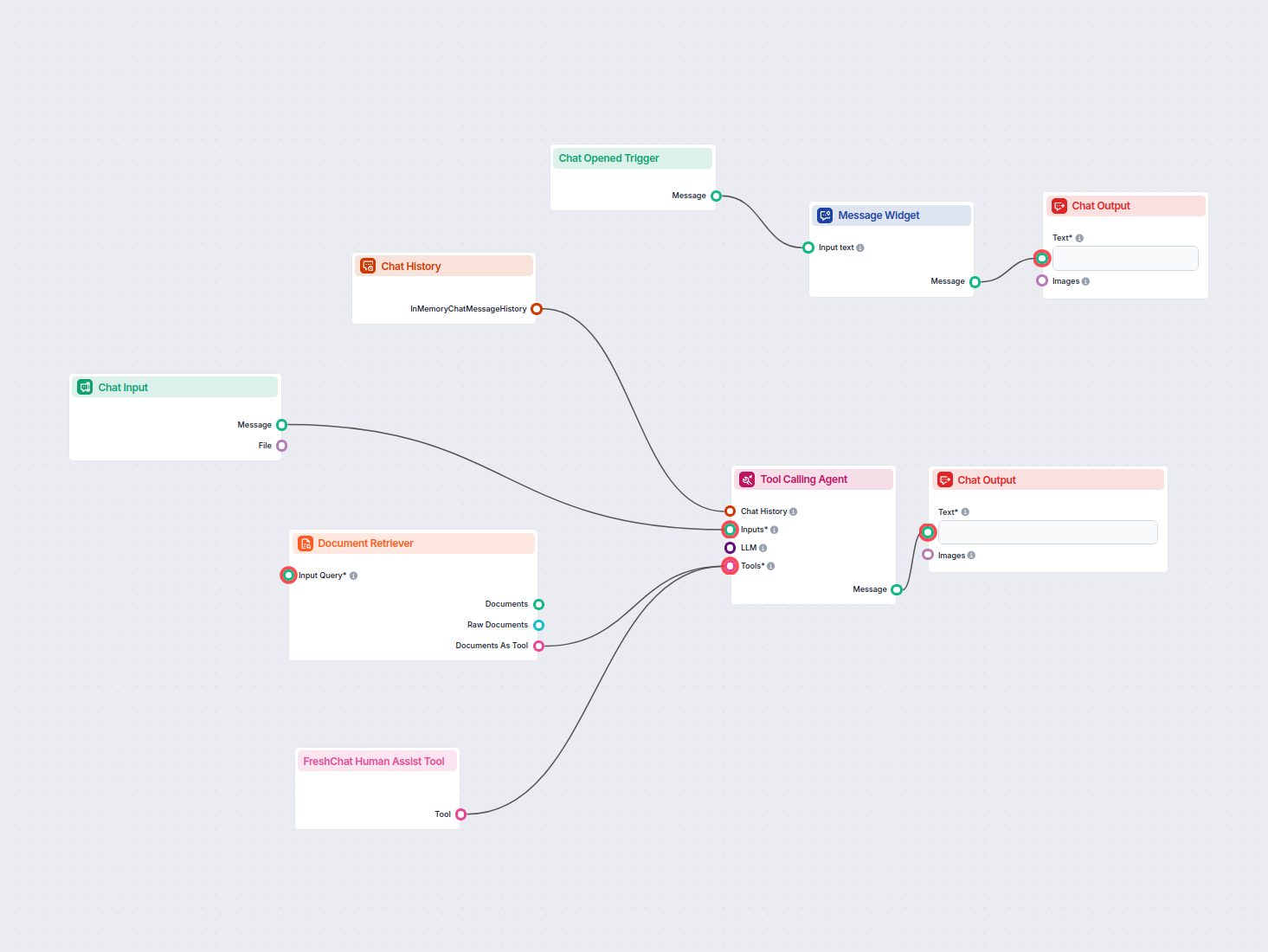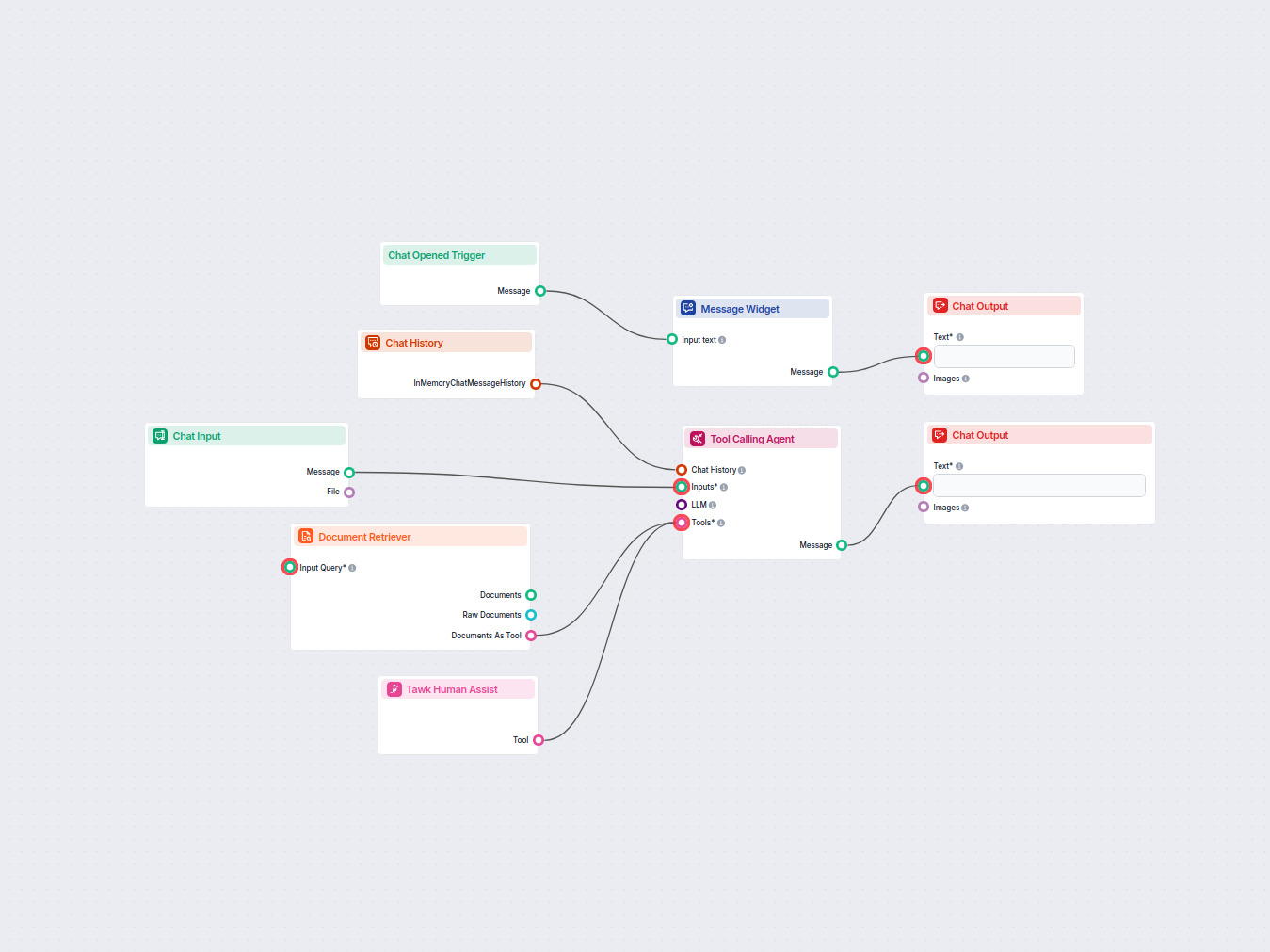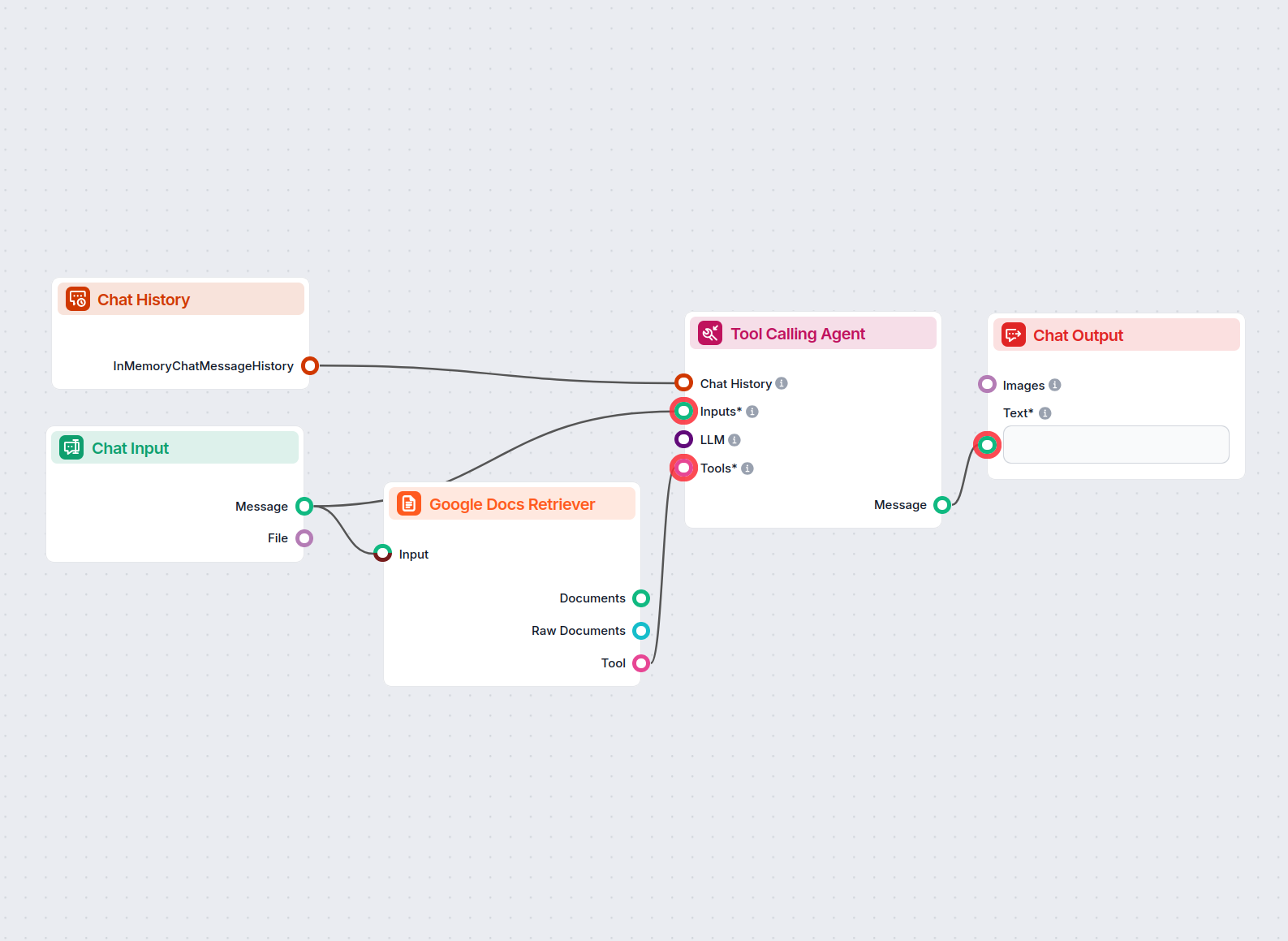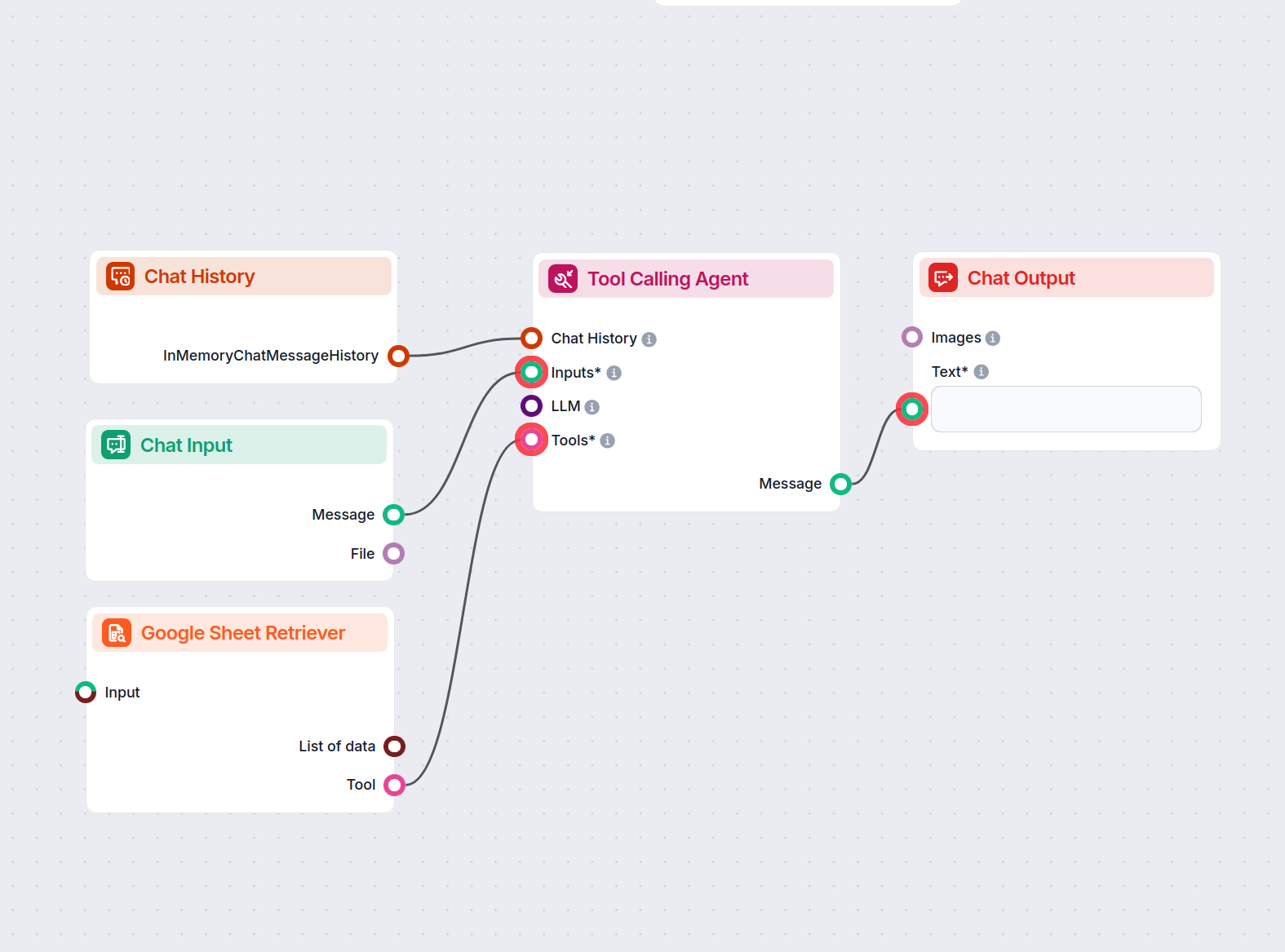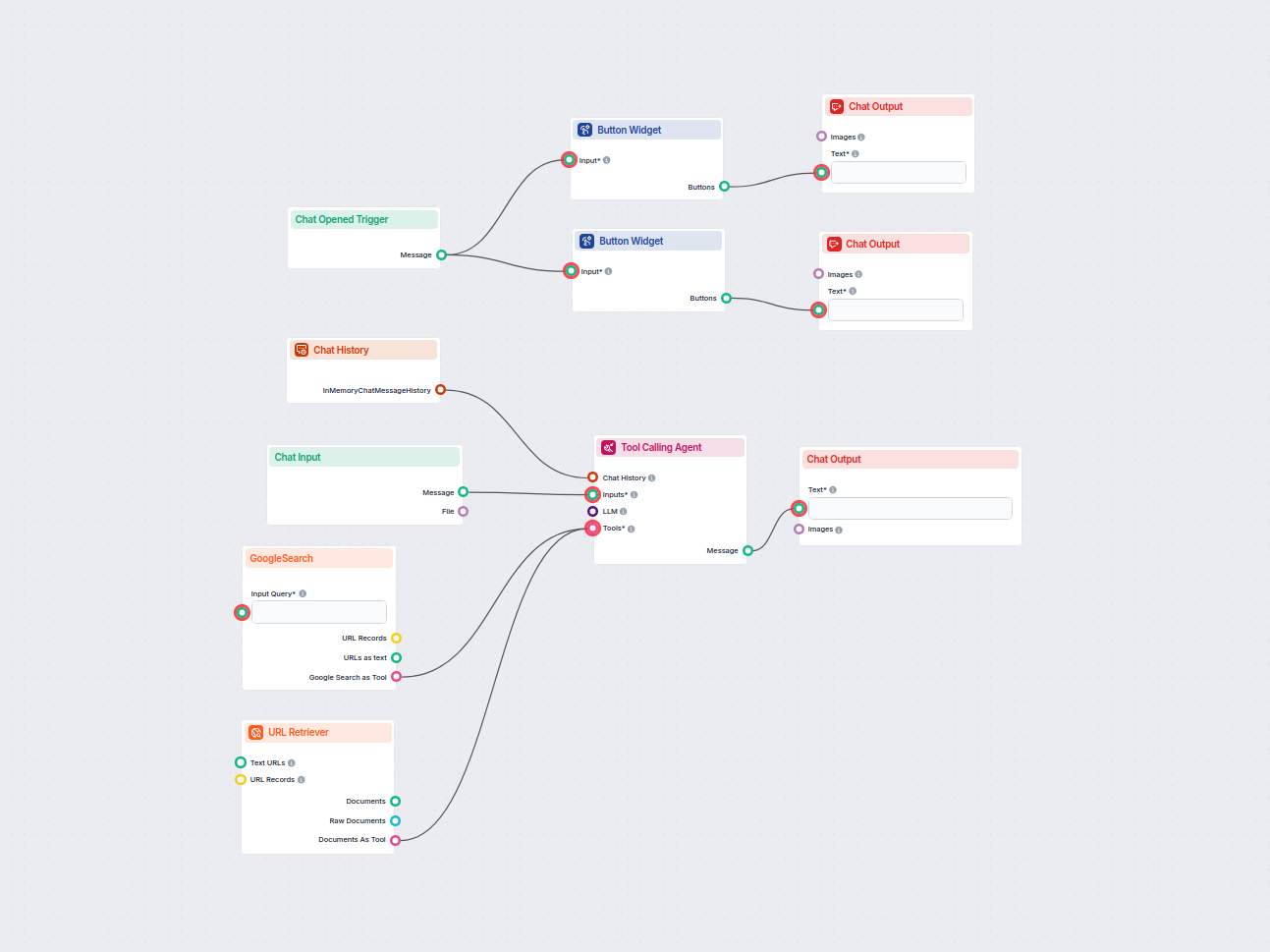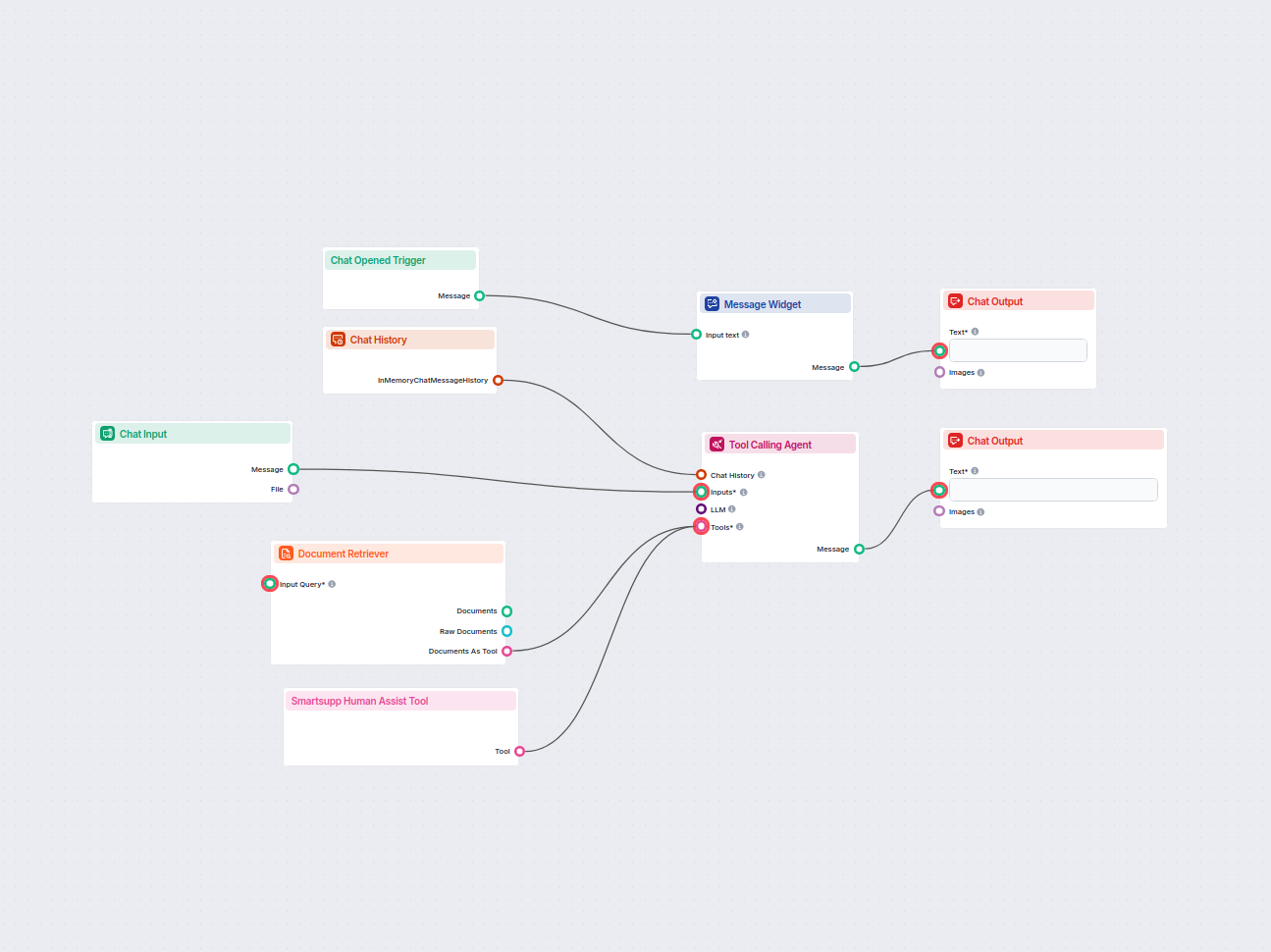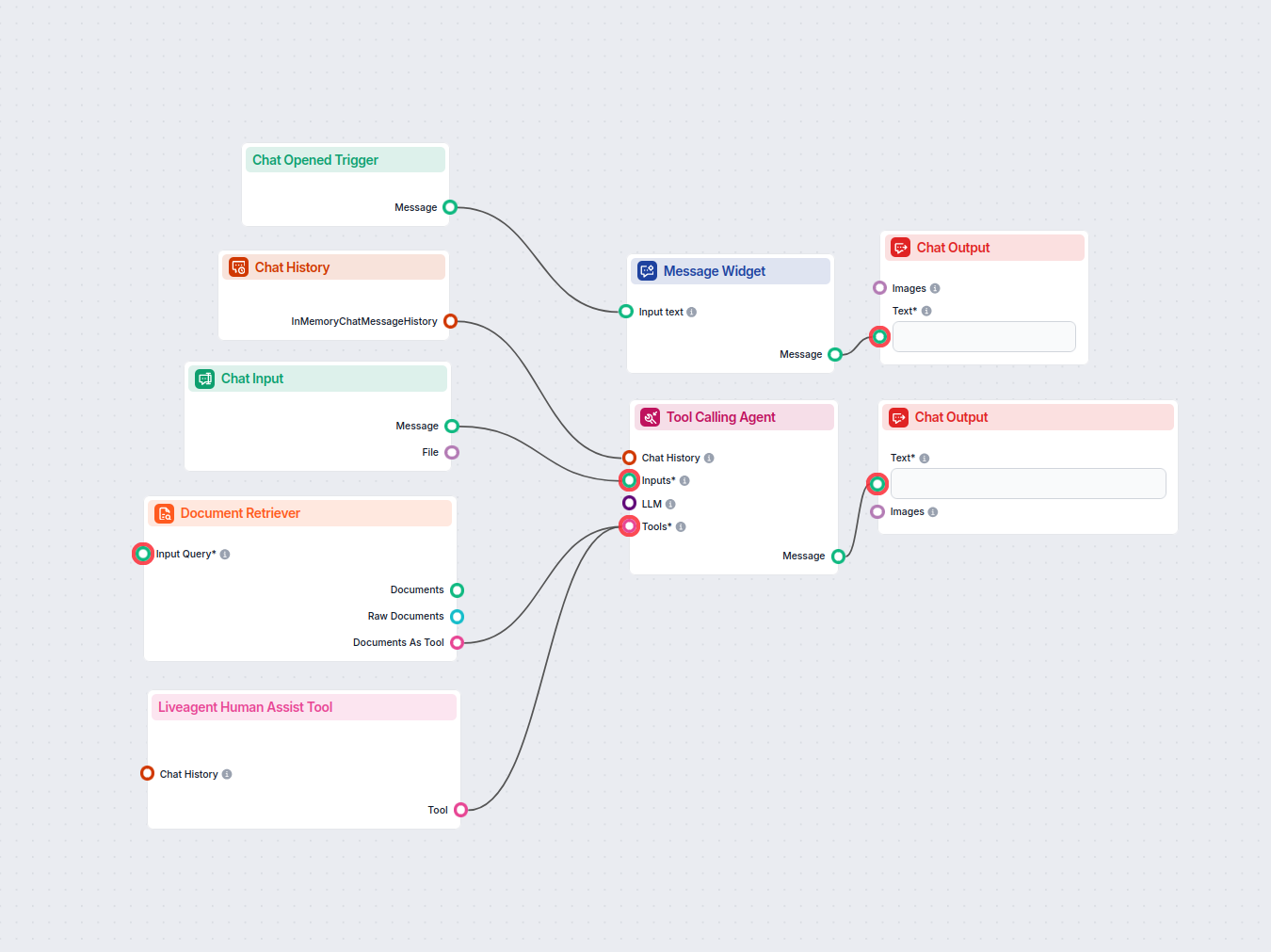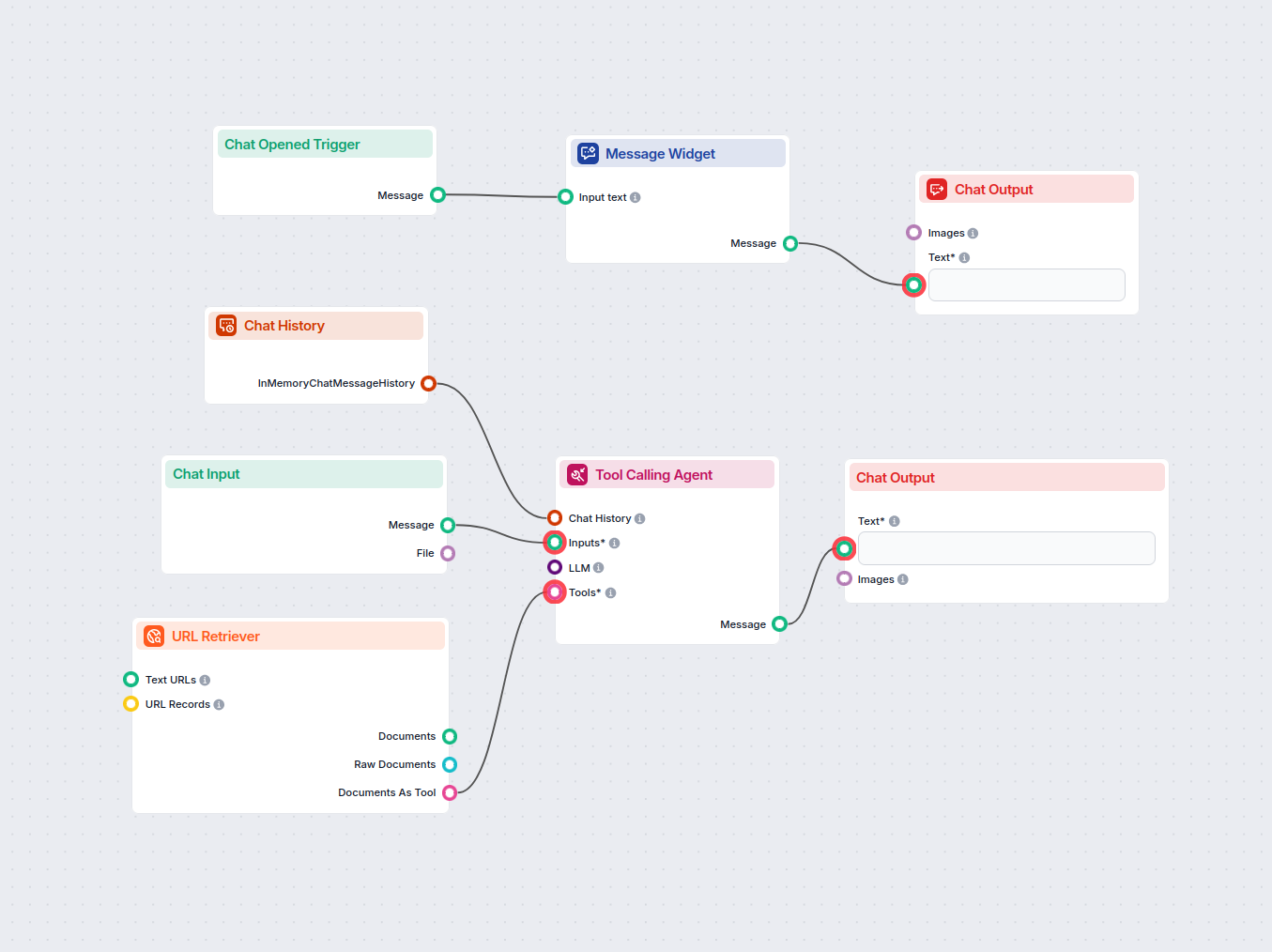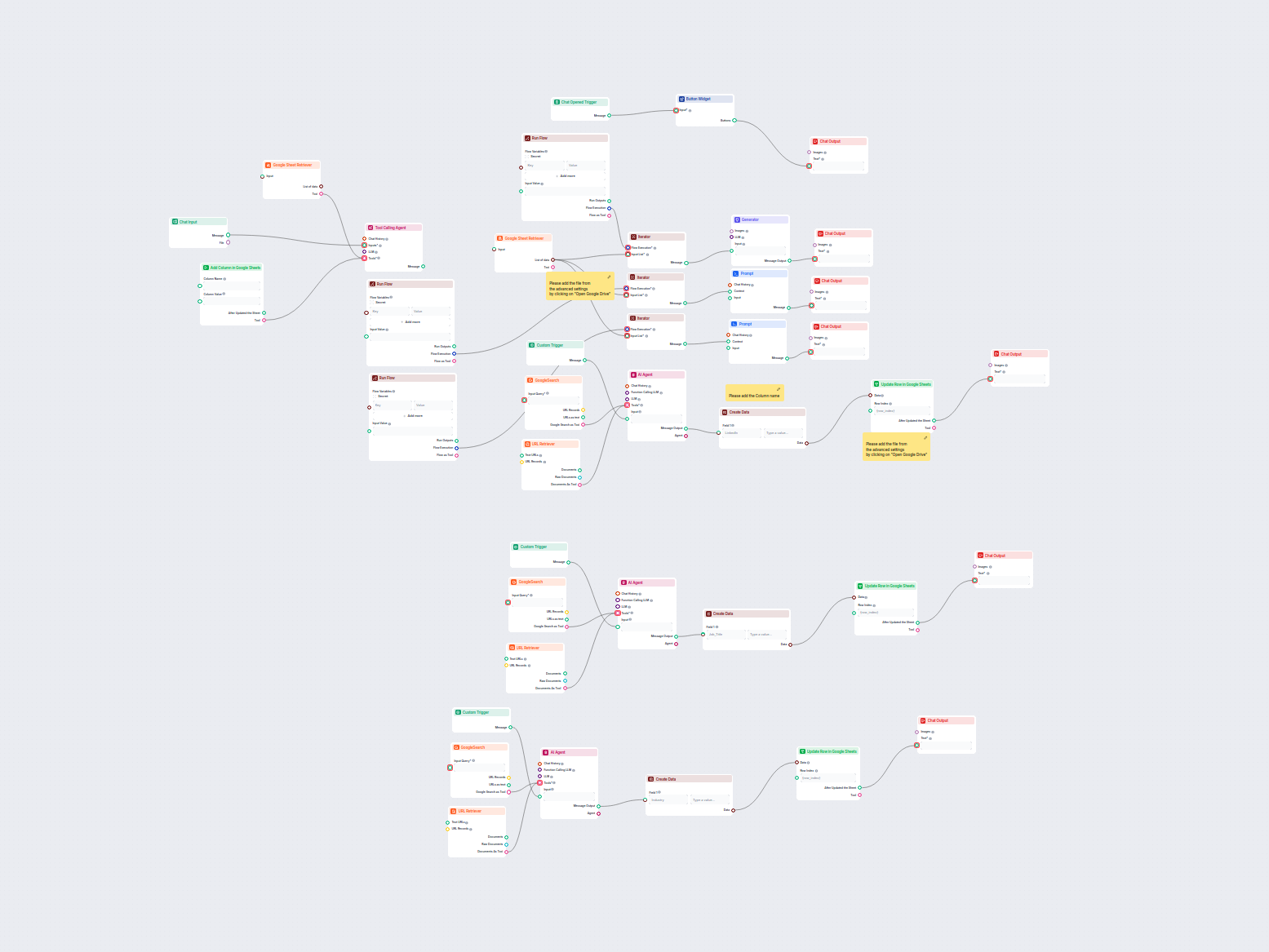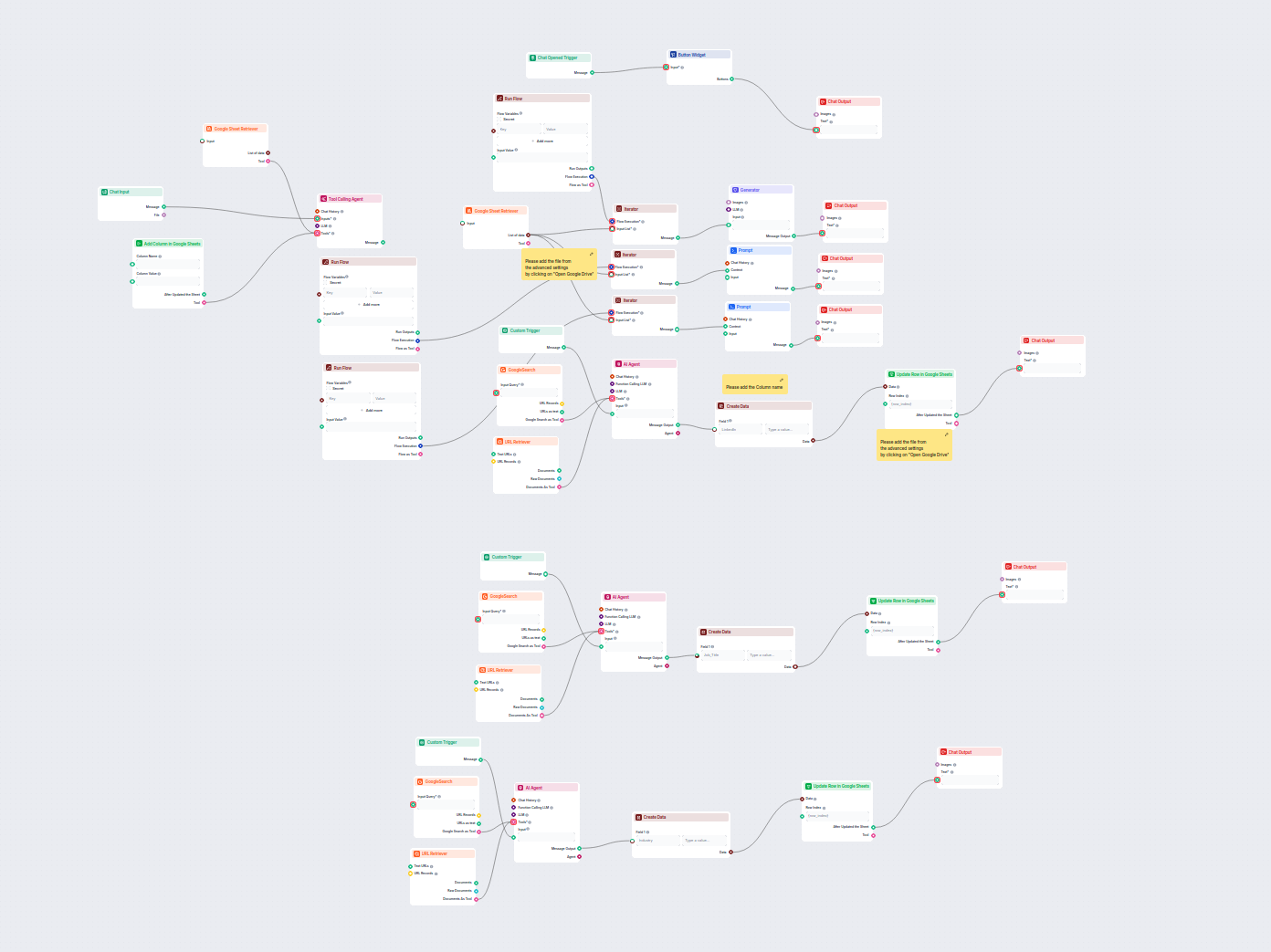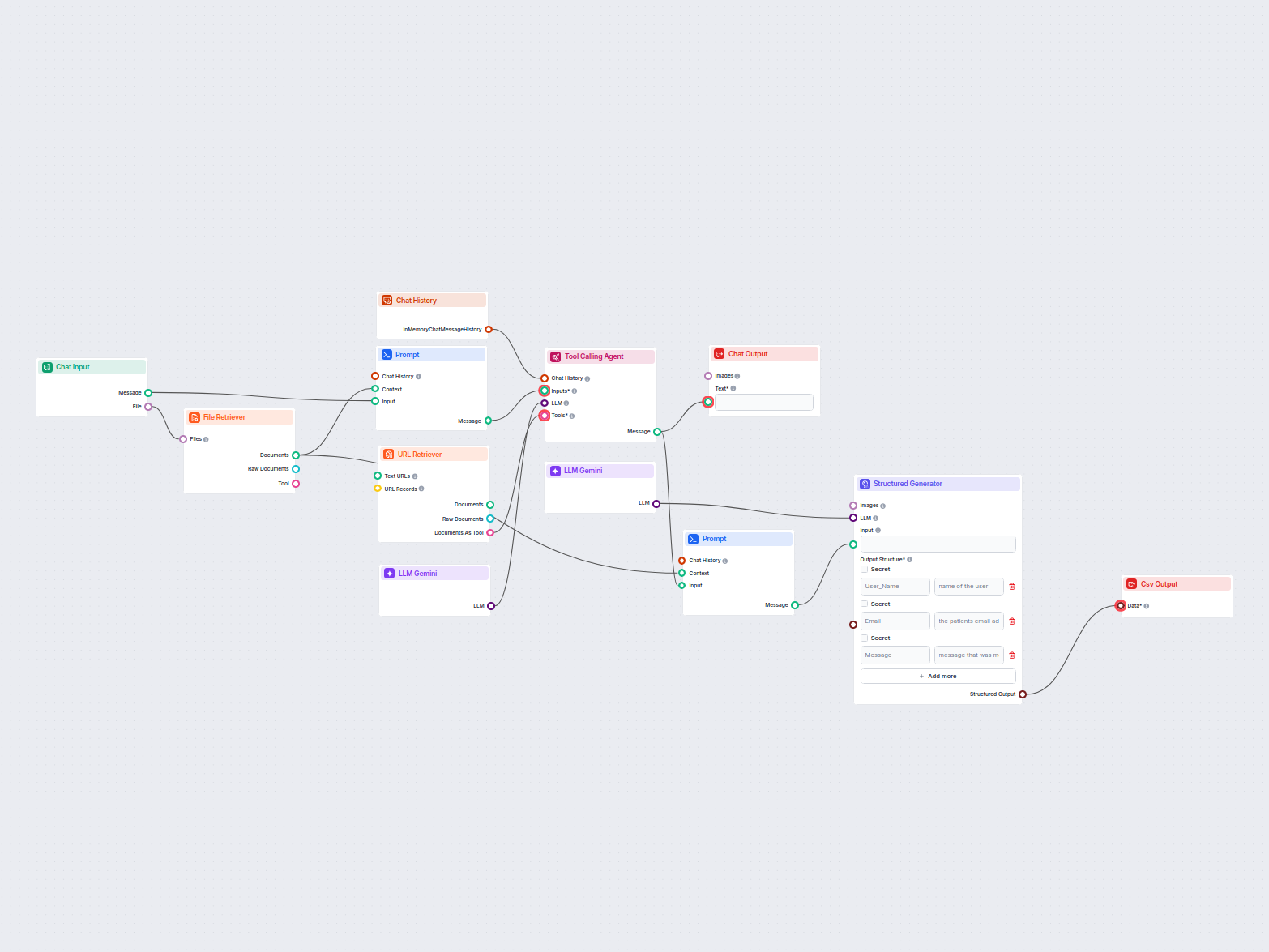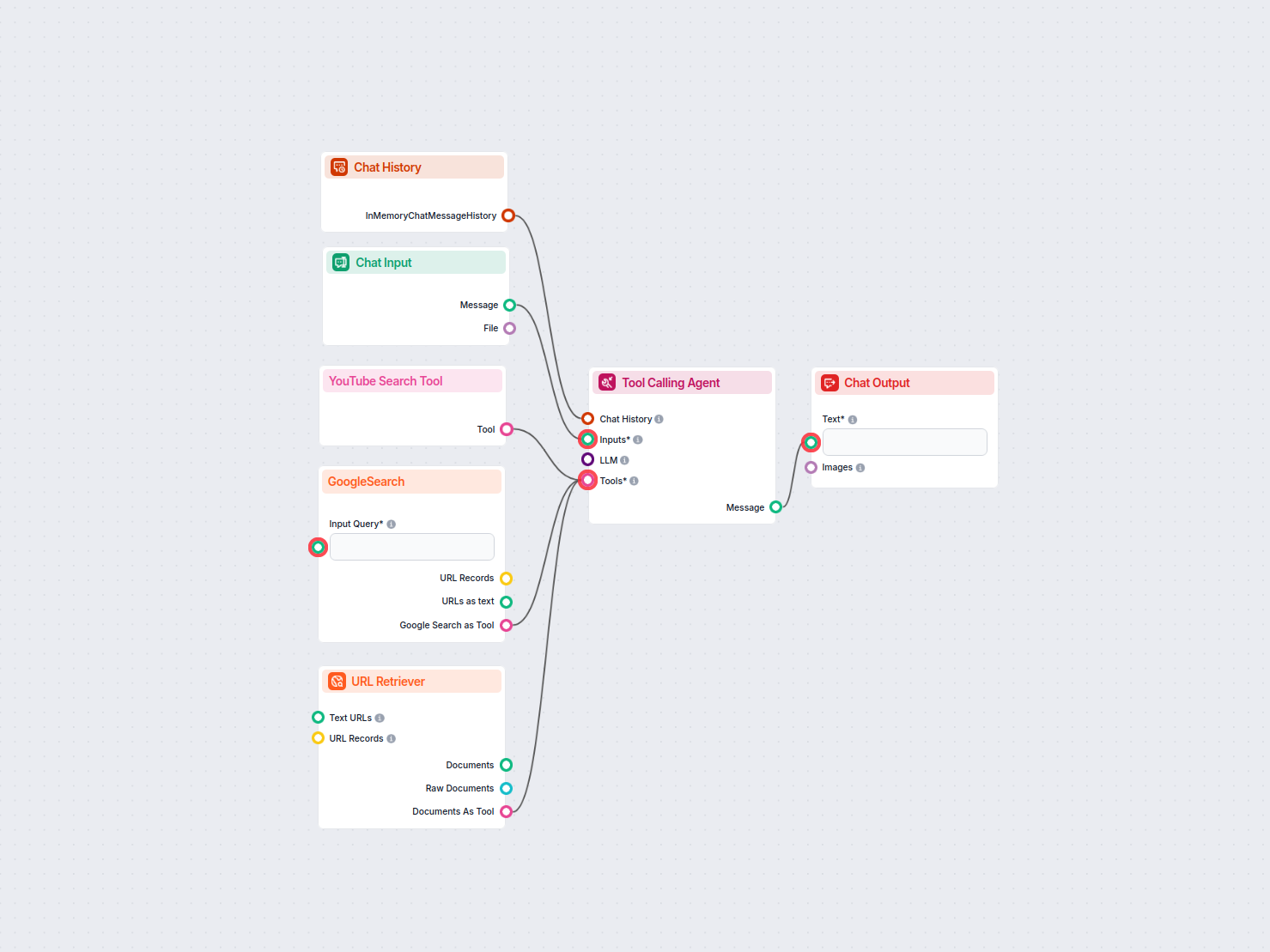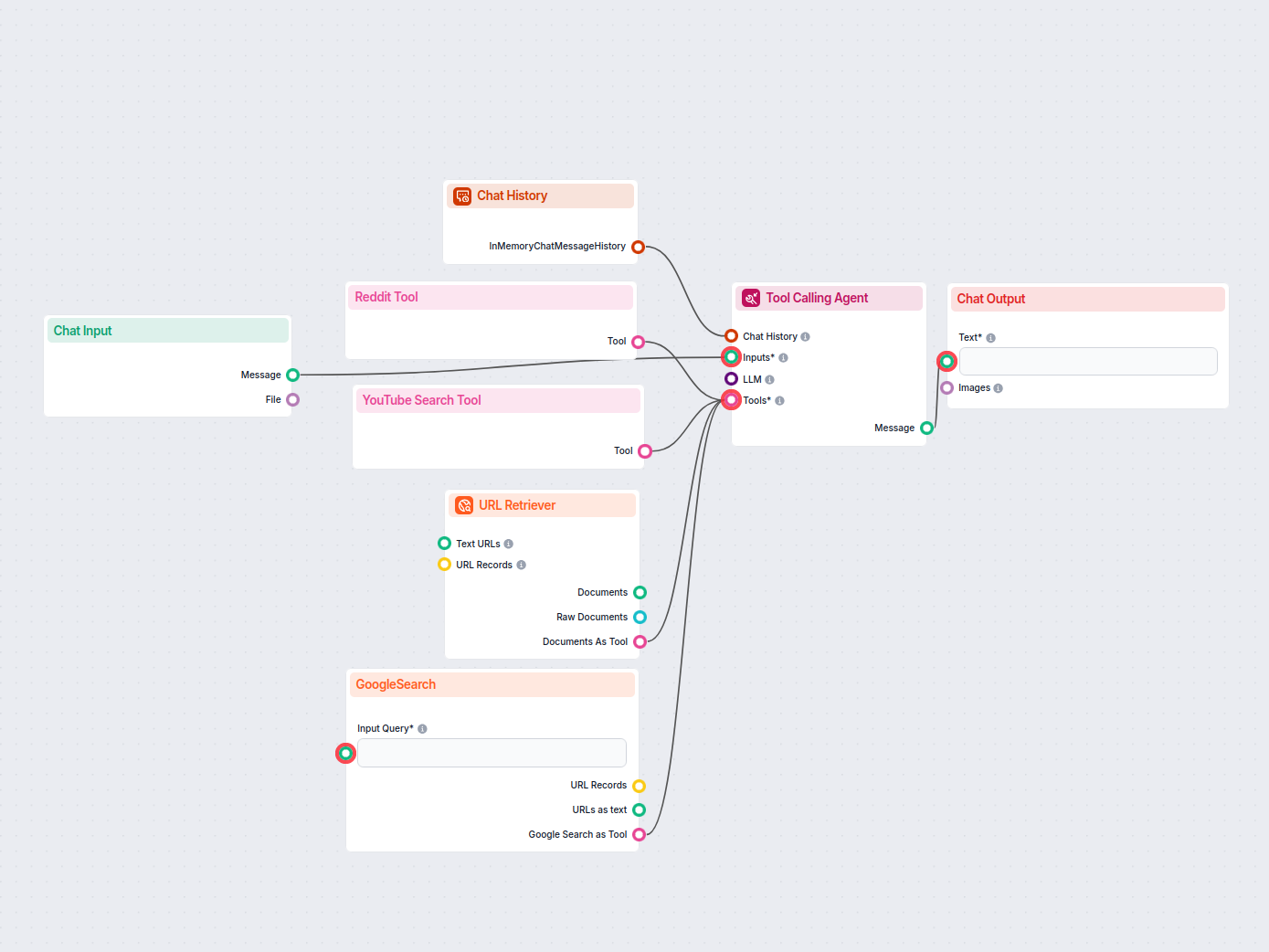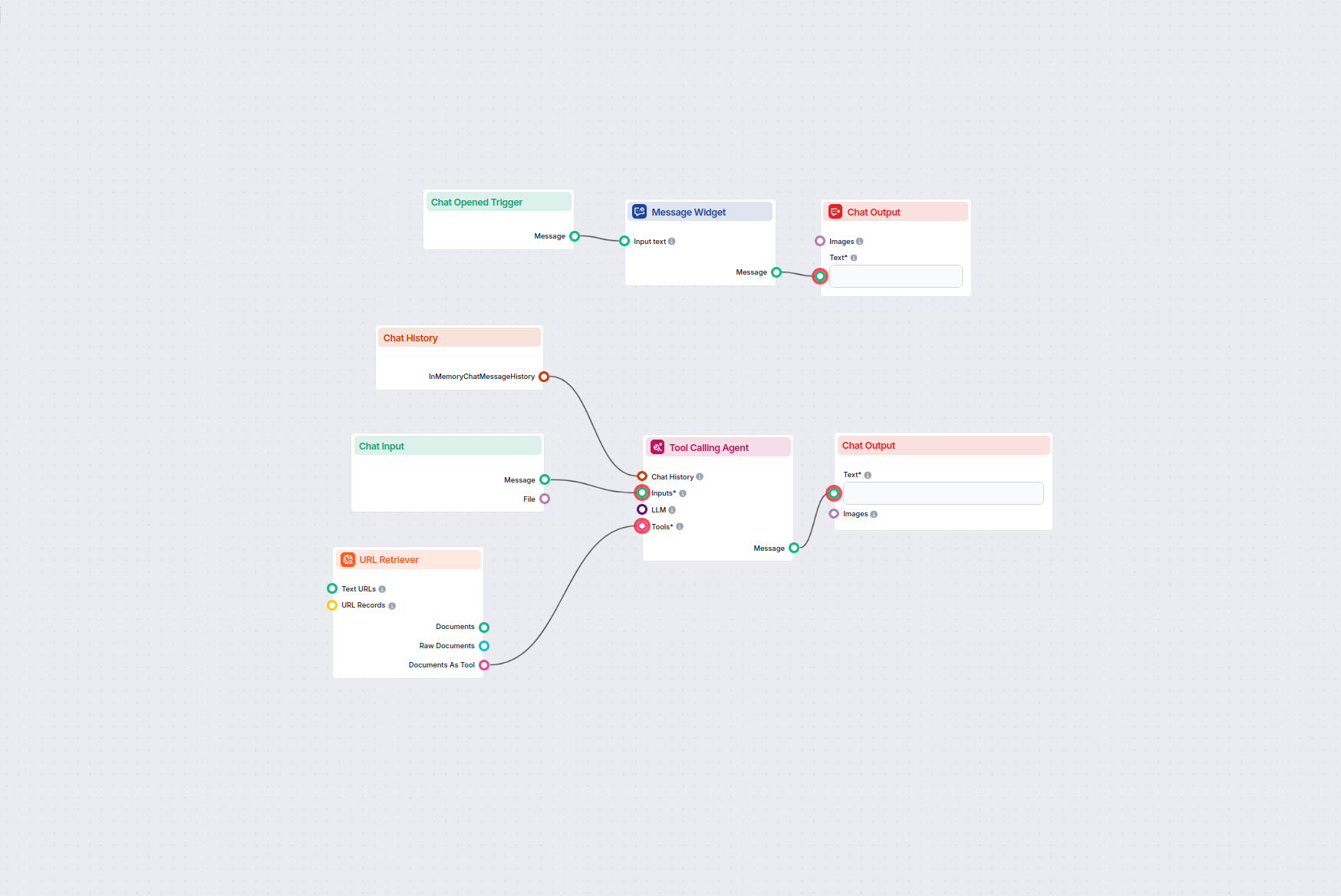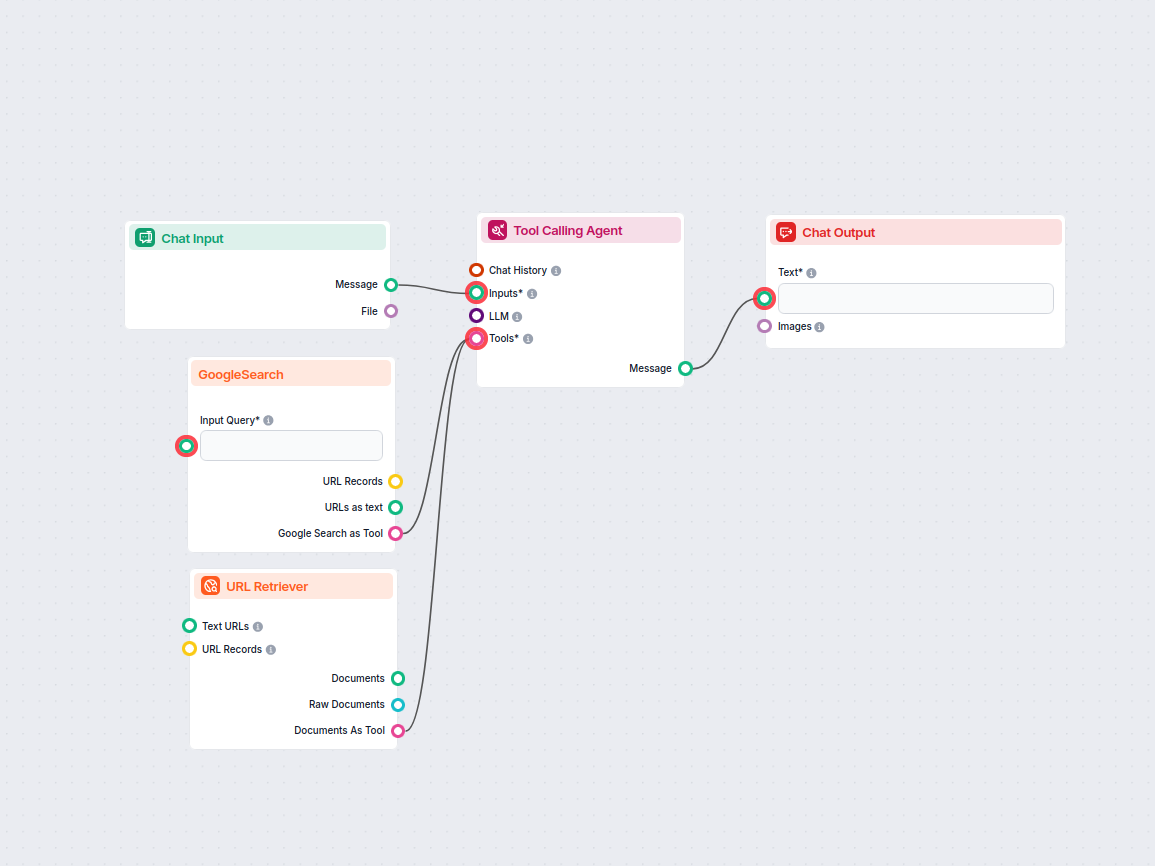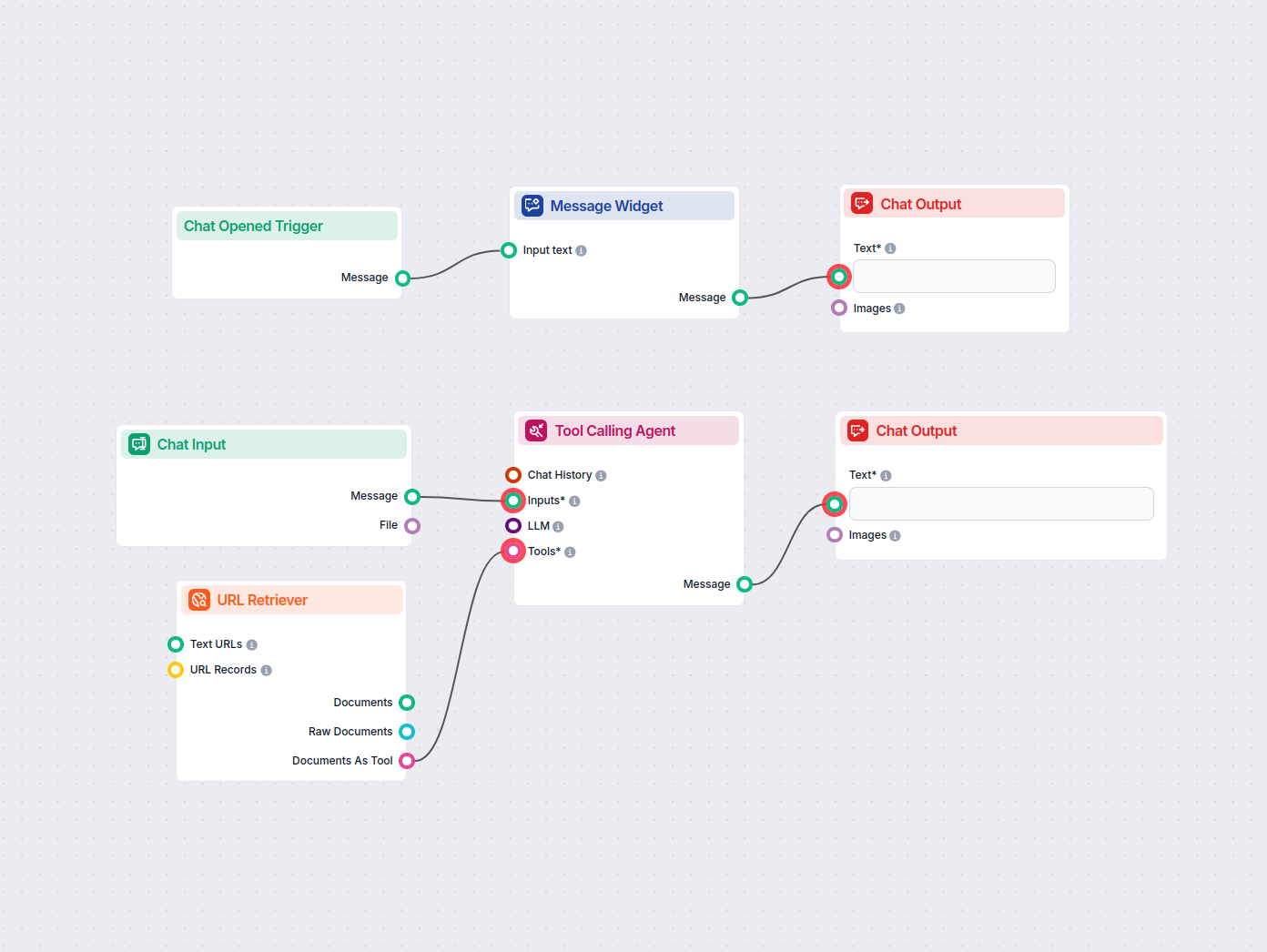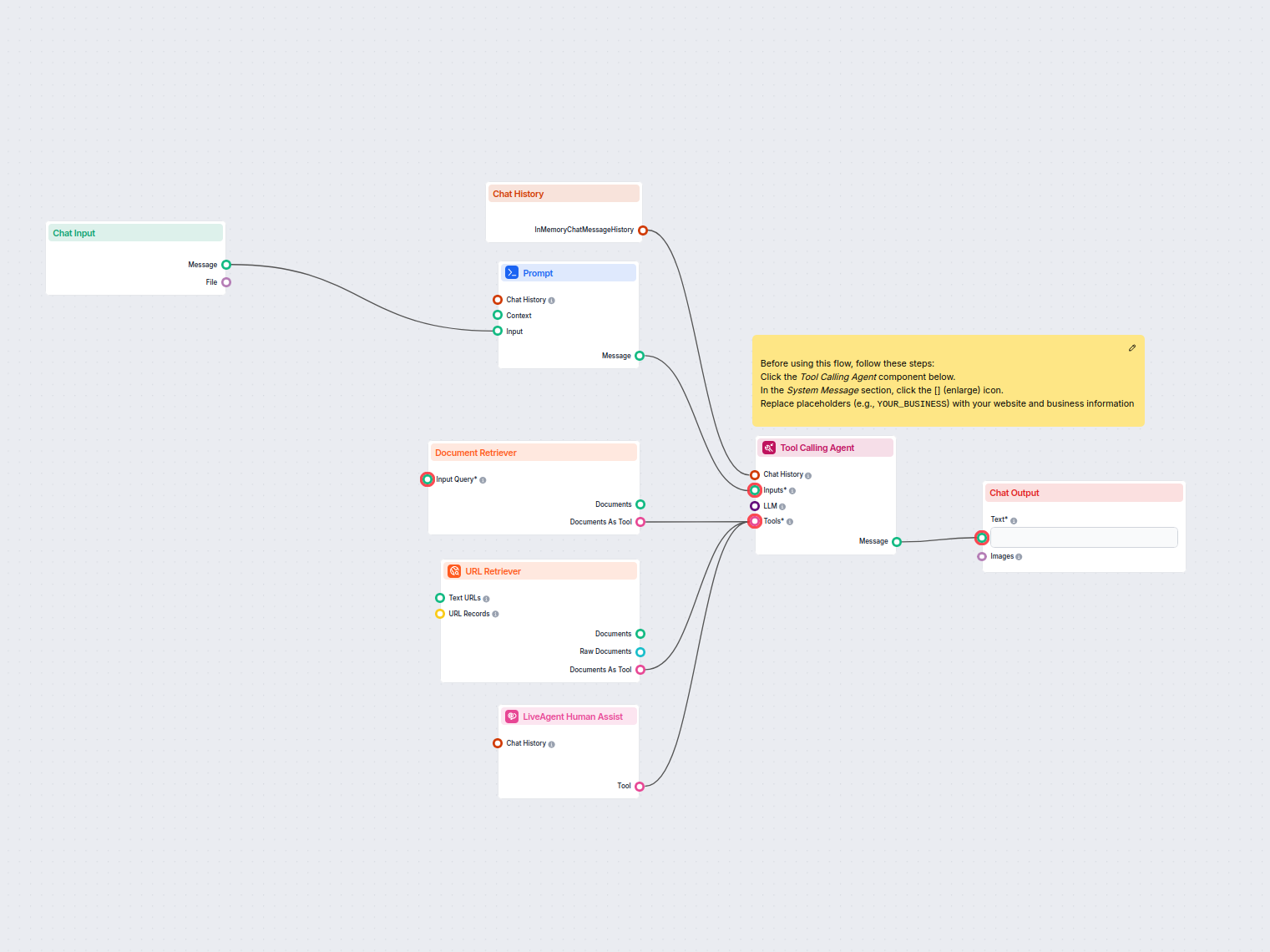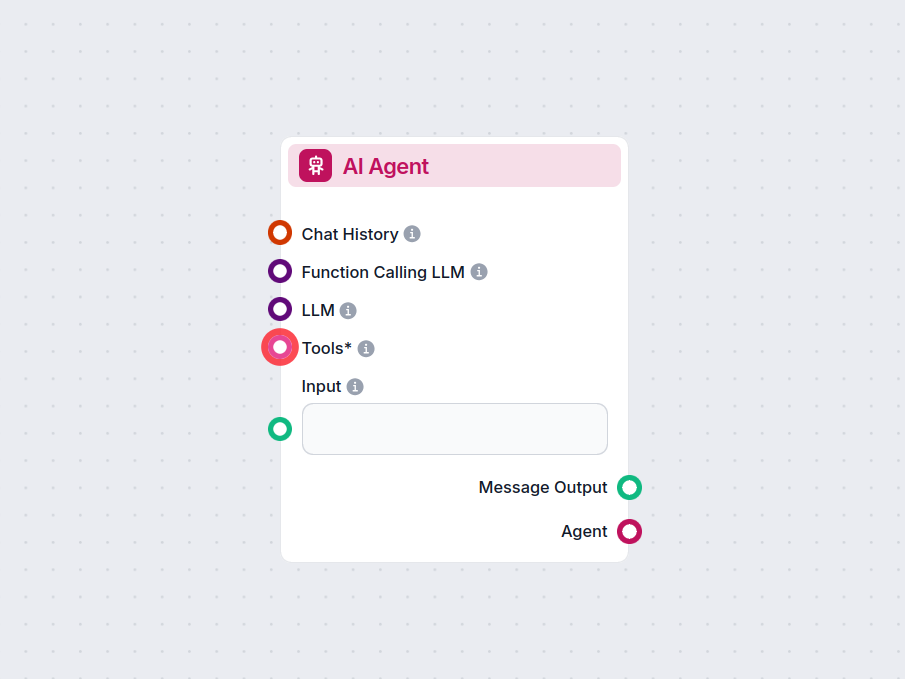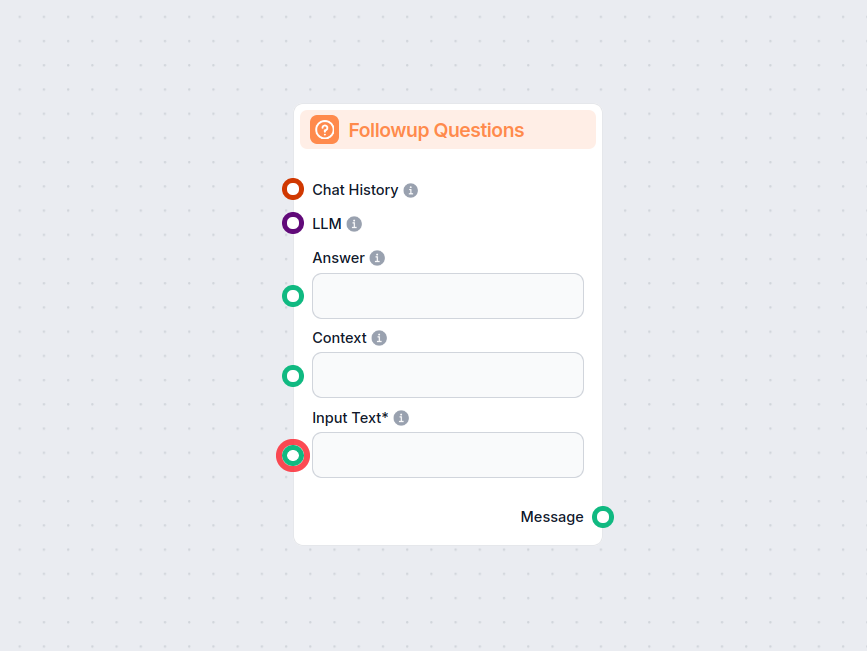Descripción del componente
Cómo funciona el componente Agente de Llamada de Herramientas
The Tool Calling Agent is a specialized component designed for AI workflows that require an agent to intelligently interact with a set of external tools in response to a user’s prompt. This component can orchestrate tool usage, manage chat history for context, and utilize language models to generate effective follow-up questions and actions.
What Does This Component Do?
The Tool Calling Agent acts as an intermediary that receives user input (typically a message), processes it using a language model, and determines which tools (from a provided list) to call in order to fulfill the request. It is capable of multi-step reasoning and can iterate over tool calls up to a specified maximum number of iterations. This approach is especially useful for complex AI tasks that require external data fetching, calculations, or integrations with APIs.
The component accepts the following inputs:
| Name | Type | Required | Description |
|---|
| Inputs | Message | Yes | The main user input or message to be processed by the agent. |
| Tools | List of Tool | Yes | A list of tools the agent can use to answer the user’s query. |
| LLM | BaseChatModel | No | The language model used to generate responses and follow-up questions. |
| Chat History | InMemoryChatMessageHistory | No | Maintains the conversation context for more coherent and relevant agent responses. |
| Max Iterations | int | No | Sets the maximum number of reasoning steps the agent can take (default: 20). |
| System Message | str | No | An optional system prompt to guide the agent’s behavior or set context for the conversation. |
Outputs
- Message: The primary output is a Message object that contains the agent’s response after processing the input and (if needed) utilizing one or more tools.
Key Features & Usefulness
- Multi-tool Orchestration: Enables the agent to choose and invoke multiple tools as needed to resolve complex queries.
- Contextual Awareness: By leveraging chat history, the agent can generate more accurate and context-aware follow-up questions and actions.
- Iterative Reasoning: The agent can perform multiple reasoning steps (up to the defined max iterations), making it capable of handling tasks that require several interactions.
- Customizable Guidance: The optional system message allows you to influence the agent’s behavior, tone, or objectives, making it adaptable to different tasks or applications.
- Flexible Integration: Can be used in a variety of workflows that require dynamic decision-making, tool calling, or contextual conversation management.
Example Use Cases
- Automated Customer Support: The agent can call knowledge base search tools, ticket creation APIs, or other utilities in response to user questions.
- Data Retrieval and Processing: The agent could fetch data from various sources (APIs, databases) and process it before responding.
- Conversational AI Applications: Enables multi-turn dialog where the agent maintains context and interacts with external services to complete tasks.
Summary Table
| Input | Description |
|---|
| Input (Message) | User message or prompt |
| Tools | List of available tools the agent can call |
| LLM | Language model to drive the agent’s logic |
| Chat History | Previous conversation for better context and memory |
| Max Iterations | Maximum reasoning/tool-calling steps per invocation |
| System Message | Optional prompt to shape agent’s overall behavior |
| Output | Description |
|---|
| Message | Agent’s final response after reasoning and tool usage |
When to Use This Component
Use the Tool Calling Agent when your AI workflow requires:
- Intelligent, multi-step problem solving.
- Dynamic use of external tools or APIs.
- Maintenance of conversation context.
- Customizable agent behavior.
This makes it a versatile building block for advanced AI-powered automation, chatbots, digital assistants, and more.
